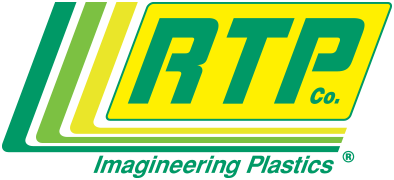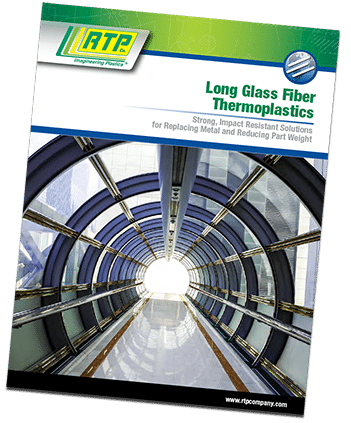Products
Very Long Fiber (VLF) thermoplastics are injection moldable thermoplastic compounds that feature continuous fiber filaments running the full length of the pellet allowing these materials to exhibit simultaneous improvements in strength, stiffness, and impact resistance over a wide temperature range.
Heralded as an exciting growth area in thermoplastics, VLF composites are widely accepted as a viable alternative to traditional reinforced thermoplastics and metals for a vast array of applications.
RTP Company uses a pultrusion process to manufacture Very Long Fiber (VLF) thermoplastics, which entails pulling continuous fiber rovings through a polymer melt in a specialized processing die. The resulting composite strands are cooled and chopped into pellets.
Pultrusion is dramatically different than the process used to manufacture short glass fiber (SGF) thermoplastics where chopped fiber is melt-blended with plastic resin using conventional extrusion compounding methods. The fiber length in a SGF pellets is typically less than 1 mm while in VLF pellets, fiber length is up to 1/2 inch.
Wet-out refers to the impregnation of the fiber rovings with thermoplastic resin during the pultrusion manufacturing process. Successful wet-out completely coats the individual filaments and results in pellets that are free of loose fibers that can cause problems during conveying.
Standard pellet length for long fiber composites at RTP Company is 7/16 inch, or 11mm, although other lengths can be specified in the 6 to 12 mm range. Experience has shown that this length provides optimal properties while still allowing processing in standard injection molding equipment.
The fiber is the structural component of long fiber composites. The longer the fiber, the more effectively the polymer is able to “grab on” and transfer stress to the fiber. At lengths around 1/2 inch the strength of the fiber is fully attained, and longer lengths provide no significant improvement in physical properties while making the material more difficult to process.
Very Long Fiber (VLF) Compounds are available with glass, aramid, stainless steel, or carbon fiber reinforcement at loadings up to 60% by weight.
- Glass fiber is the most popular and cost effective reinforcement used for VLF composites
- Stainless steel fiber for its electrostatic dissipation (ESD) and electromagnetic interference (EMI) shielding properties
- Carbon fiber provides additional enhancements in flexural modulus and potential weight reductions while also providing ESD properties
Available glass fiber loading levels for most thermoplastic resins are 20, 30, 40, 50, and 60% by weight. Balancing performance, cost, and weight are critical criteria in selecting a correct polymer to fiber ratio. In general, 40 and 50% loading levels are most common.
Polypropylene and Nylons are the most commonly utilized polymers for Very Long Fiber (VLF) compounds, but they can be produced in a number of other polymer systems including high temperature resin systems like PPS, PPA, and PEEK.
Our network of production facilities is located on the three continents (Asia, North America, and Europe) where major manufacturing enterprises are concentrated.
To ensure timely and efficient delivery our long fiber thermoplastic (LFT) composites are produced at three sites in North America (Winona, MN, Indianapolis, IN, and Monterrey, Mexico); at our European facilities in Beaune, France and Wroclaw, Poland; and at our facility in Suzhou, China. RTP Company is committed to adding additional manufacturing capacity as the market for LFT composites grows.
Performance
Very Long Fiber (VLF) composites bridge the price-to-performance gap between short glass fiber thermoplastic (SGF) materials and advanced composite materials while still being processable via efficient injection molding methods.
Successful end-uses often require greater performance than is attainable with SGF products and where metal is not a desirable option due to weight or per part costs. VLF Compounds have gained rapid acceptance as a viable alternative to die castings, metal assemblies, and traditional plastic materials in a vast array of markets, including: industrial equipment, automotive, consumer goods, sports and leisure, and information technology.
The benefits of Very Long Fiber (VLF) thermoplastic composites can be easily understood by examining the entangled long fiber matrix formed in a finished part. Exposing a molded part to pyrolysis conditions, commonly referred to as burn-off, removes the polymer and leaves behind the glass reinforcing fibers allowing visual examination. The fiber network that is formed by a VLF material retains the shape of the molded part and resembles a fiber perform with well and evenly distributed fibers.
The extensive fiber network in an VLF part improves many performance characteristics and also inhibits crack propagation. Often referred to as “stiff and tough”, VLF Compounds exhibit a wide range of performance advantages:
- Better impact resistance and rigidity at elevated and sub-zero temperature ranges (up to 5 times that achieved with short glass fiber thermoplastics)
- Modulus retention at elevated temperatures
- Creep resistance under constant load in severe environments
- Dimensional stability and resistance to warpage resulting from reduced shrinkage — which occurs as thermoplastic materials solidify during molding
Relative to short fiber materials, Very Long Fiber Compounds are slightly more expensive, but yield price-to-performance advantages that make them attractive for end-use applications that need an engineered material solution. Due to the efficiencies of the injection molding manufacturing process, VLF composites result in a lower per piece cost when replacing metal and provide a significant reduction in weight.
RTP Company has multiple engineers dedicated to long fiber composite product development. You can draw on their expertise during the application assessment and material selection process, or at anytime during your product development or manufacturing cycle. In total, RTP Company has over 70 R&D engineers with expertise across a variety of disciplines — ranging from color, conductive/antistatic, wear resistance, and flame retardants — who can assist with any application requirement you may have.
RTP Company has many specialty compounds certified to the automotive specifications of major OEMs. Please contact RTP Company to inquire about a specific standard to determine which materials are suitable.
Customizing materials to end-use requirements is a hallmark of RTP Company. Our experienced team of over 70 product development engineers are highly accessible and distributed worldwide, allowing them to answer your inquiries personally. Depending on usage volume, additional additives can be incorporated directly into our long fiber composites to meet your requirements or combined as a cube blended long-cut masterbatch.
Yes, RTP Company offers color masterbatches that can be combined with our long fiber products during molding; these masterbatches are optimized to preserve fiber length. Choose from our portfolio of standard colors or have our specialists custom match a color to your precise standard.
Application Development
Reasons for using Very Long Fiber (VLF) Compounds vary, but the most common reason is the increase of mechanical properties compared to Short Glass Fiber (SGF) Compounds – opening up the design window and allowing thermoplastic compounds to be used in more demanding applications. Among the properties improved by VLF Compounds, the primary beneficiary is impact performance, with Izod impact values often more than doubling SGF Compounds.
Any of our product development engineers, regardless of their area of expertise, can help you identify your applications’ unique requirements and recommend a plastic compound that will meet your precise needs. Our engineers are polymer experts renowned for their accessibility and ability to solve your application problem.
Reinforced plastic compounds have replaced metal in many applications by providing better aesthetics, corrosion resistance, and opportunities for part consolidation. When choosing Very Long Fiber (VLF) composite materials, designers can now exploit these benefits when confronting demanding load requirements of structural components.
In instances where other reinforced plastics do not fulfill performance requirements of complex parts, VLF Compounds are the logical choice; designers regularly choose them to avoid typical metal concerns, such as corrosion, painting, and recycling. For example, die castings and metal assemblies are ideal applications for the advantages of VLF Compounds.
RTP Company’s global Technical Service team is available to provide expertise regarding design analysis, mold construction, pre-production trials and trouble-shooting. A wide variety of Computer Aided Design analysis and metal replacement tutorial services are also available.
Many die cast tools can easily be modified to allow them to be used for plastic injection molding. Often, this is a convenient first step in creating a meaningful prototype to measure success potential for changing materials.
Processing & Handling
Typically, specialty compounds manufactured by RTP Company, including VLF Compounds, are packaged in 1,100 pound gaylord bulk material boxes. When ordered in 40,000 pound quantities VLF materials can be delivered via bulk truck and directly conveyed into your material silo.
Yes, care should be taken to maximize fiber length in the molded article to maintain physical properties. Typical accommodations include: use of free flowing check-rings and general purpose screws; generous mold gates and runners; and radiused corners and direction changes.
All reinforced plastics, particularly those with fiber ends, are more abrasive to molding machinery than unfilled resins. Since long fiber composites have fewer fiber ends than an equal loading by weight of short fiber material, it wears less on equipment.
No special equipment is required to injection mold Very Long Fiber (VLF) composites. However, to produce quality parts care should be taken to minimize fiber breakage and maximize fiber distribution and packing. Contact your local Sales representative to discusses these and other issues related to molding VLF composites.
Use low shear conditions to minimize unnecessary fiber filament breakage and maintain maximum physical properties in finished parts. Low shear conditions commonly include: proper barrel temperatures, slower screw rotation, minimal back pressure, and moderate injection speeds.
Even with the utmost care, some fiber breakage will occur during the molding process – this is to be expected. Successful molding practices minimize broken fibers and result in a normal bell-curve distribution of complete long and broken fibers.
If excessive fiber breakage occurs molded articles will not have the high stiffness and toughness associated with well made Very Long Fiber composite parts. Consult your local Sales representative for details on maintaining optimum physical properties during molding.
Look for evidence of long fibers protruding from the sprue entry. Conducting a pyrolysis, where the polymer is burned away leaving the fiber matrix intact, allows fiber distribution, packing, and breakage to be visually examined.
Very Long Fiber (VLF) composites exhibit excellent flow characteristics, even at high fiber loadings of 60% by weight. Not only can VLF composites flow long distances, they routinely fill intricate and thin wall sections with remarkable ease. Evaluation of any material in its end-use design should always be conducted to ensure appropriate properties are maintained.
Very Long Fiber (VLF) Compounds are regularly molded into parts weighing in excess of 10 pounds and with surface areas comparable to doorways. The limiting factor is not VLF composites, but the availability of large injection or compression molding equipment.
To be economically viable, direct in-line compounding demands large numbers of large parts to be molded on a single machine. Deploying a direct in-line compounding system also requires a significant investment in specialized equipment that must be kept continuously in operation along with the development of in-house compounding expertise. For many applications and molders purchasing Very Long Fiber (VLF) materials as pre-compounded pellets is a better option because of its flexibility and reduced capital investment.
Supplier selection criteria vary, but most customers rely on RTP Company because of our broad portfolio of specialty compound products and the engineering expertise to support them during development and production. All RTP Company manufacturing facilities are registered to ISO 9001:2000 quality standards and are located across the globe allowing consistent and timely delivery no matter where you do business.
Yes, the 1/2 inch size of long fiber composite pellets can be easily accommodated by most air conveyance systems. Full “wet-out” of long fiber composites minimizes loose fibers and other fines that cause problems in air conveying systems. Use of abrasion resistant elbows is recommended.
Download a copy of our Long Glass Fiber Thermoplastics brochure today!
Learn more about RTP Company’s Long Glass Fiber (LGF) Compounds technology and how it can significantly improve impact resistance without sacrificing strength and stiffness.





